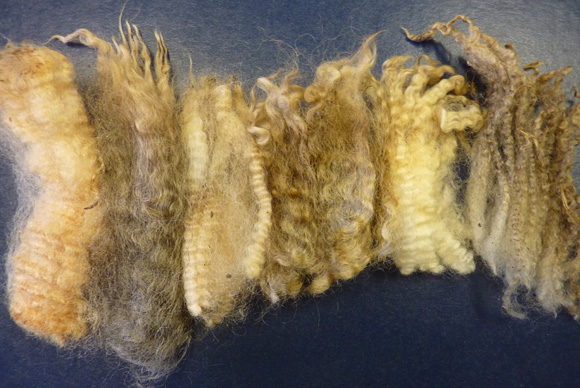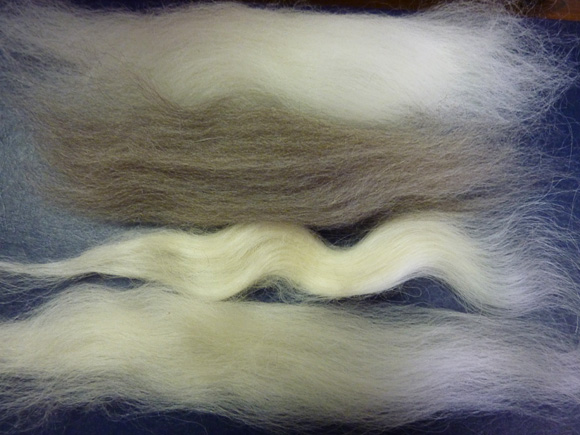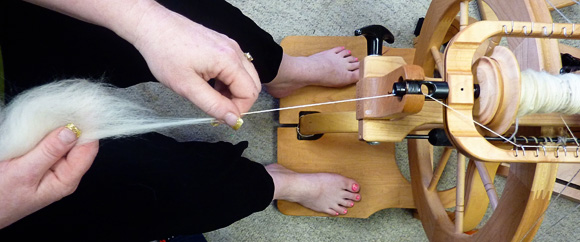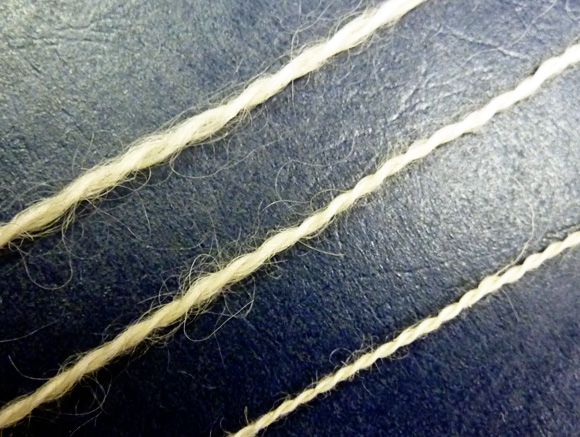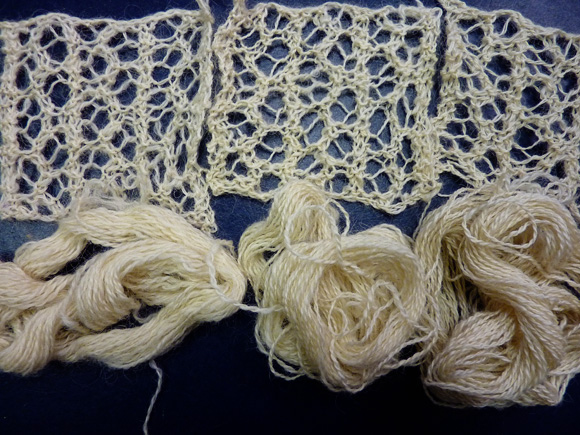|
|
|
What is a longwool?
Lots of people say
the longwool breeds are only
good for rugs. Well, I
disagree. Longwools are great for
both outerwear and lace.
Shawls are my favorite type of outerwear and are almost always worn
over another article of clothing. Longwool yarns
are fantastic for lace
knitting. They create yarn
with lovely drape, crisp
stitch definition and gorgeous
shine. With this in mind,
we can start looking at
the not-as-soft-as-merino wools in a different way.
If
processing
the locks
yourself, flicking or
combing
will both
work very
nicely but
if the locks
are extremely
long – 5 inches or
more – flicking
may not
be the best
choice.
It is difficult
to do a
good job
flicking
open the
fibers along
the entire
length of
the staple
enough to
draft smoothly.
Twist
You can see what happened in the photos. The most softly spun yarn has a lovely halo and is very soft. When I looked at this finished yarn, I was afraid it would be too soft for what I wanted, but when I knitted up the swatch I was pleasantly surprised at the outcome.
The medium-twist yarn is
the one I liked best from
the start and the swatch
didn’t
disappoint. Finishing your yarn |
| ABOUT THE AUTHOR |
|
|
|
Text + Images © 2009 Beth Smith. Contact Beth |


